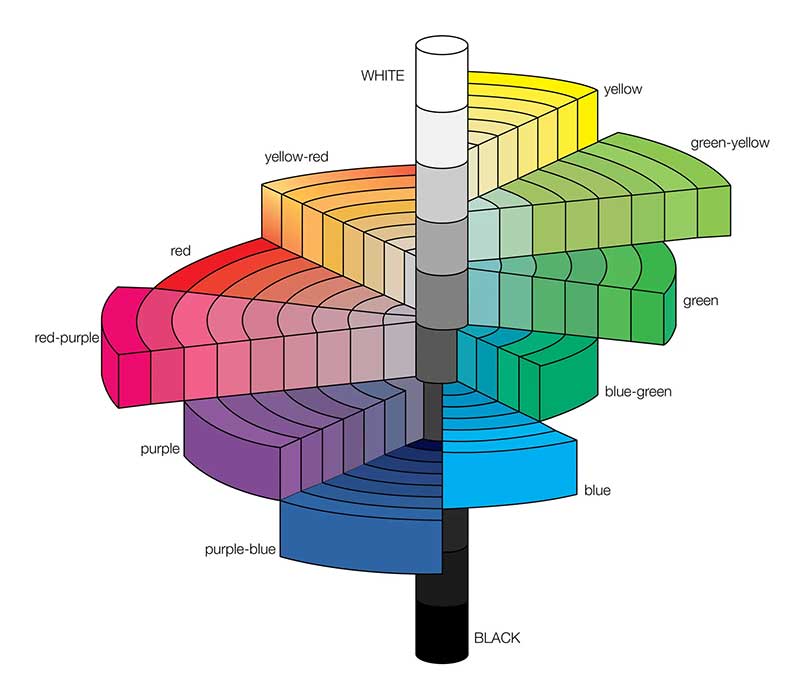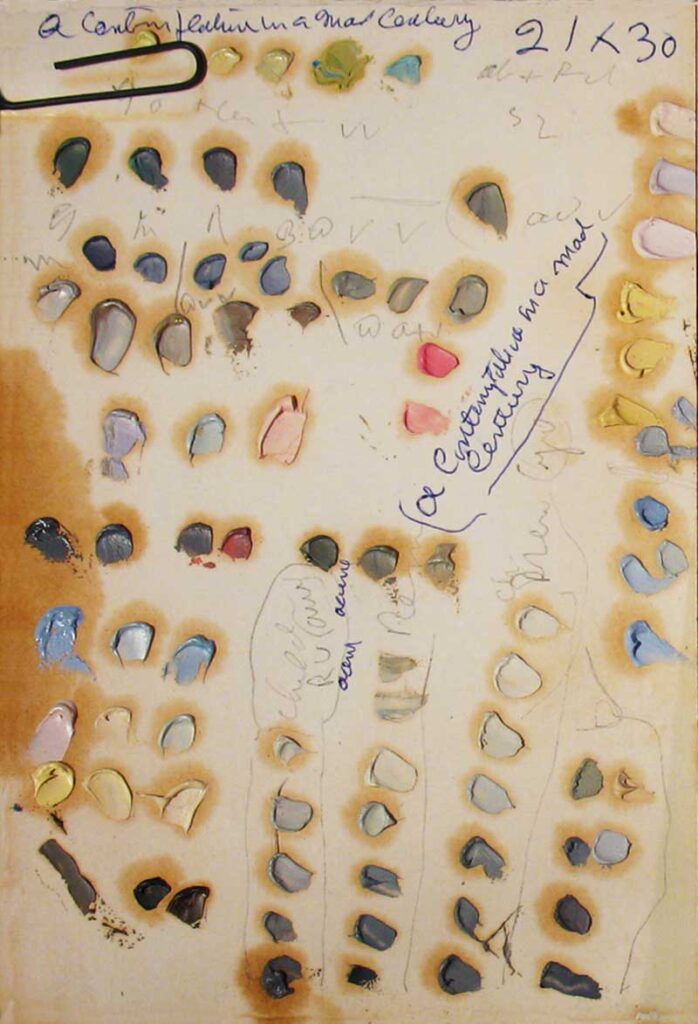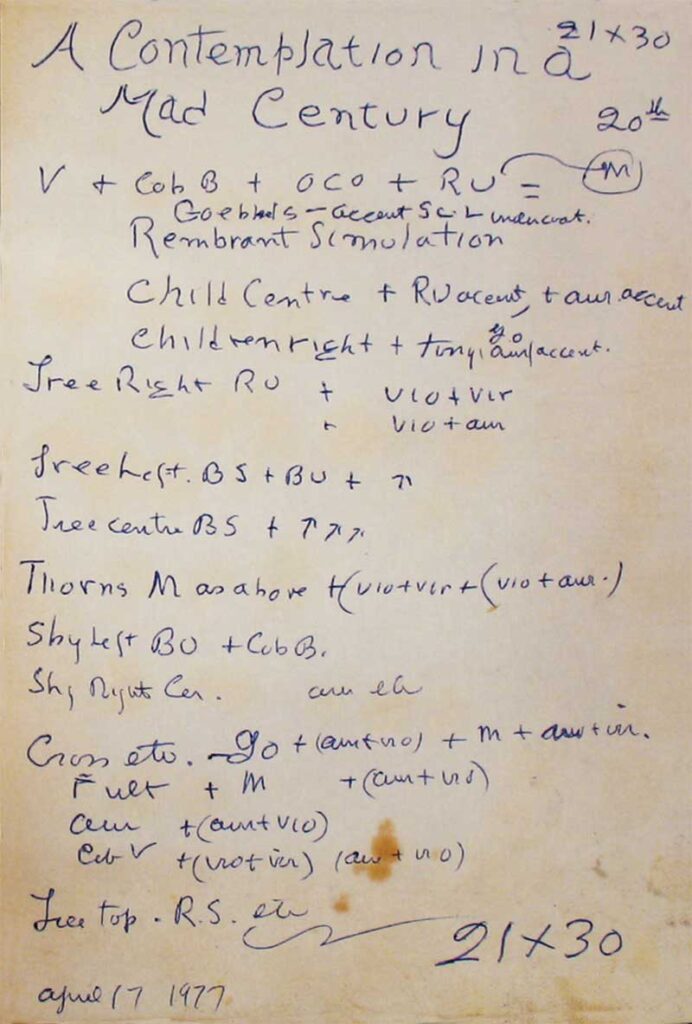Harvard & Color
Quinton’ s talent was color. As he rarely painted from real life, his palette came from his visual imagination. At Harvard College he encountered one of the major color theorists of his time, Arthur Pope.
In Pope’s textbook on color we find a system of three-dimensional color space. This framework of hue, value (lightness/darkness) and chroma (color strength) had first been devised by the American artist and art teacher Albert Munsell (1858 -1918). Quinton took classes from Pope in both the sculpture and painting of the Italian Renaissance and in studio work.
Although Harvard did not provide a major in studio art, Professor Pope must have had a significant influence on Quinton as Pope was also a practicing artist with gallery exhibitions of his own.

Three-dimensional chart of color space by Albert Munsell
From Quinton’s notebooks (both during and after college) we see him developing skills in understanding and mixing traditional oil paint pigments. He also devised diagrams of how his colors related to various chromatic systems.
Quinton kept a visual diary of how he applied these colors to each individual painting. From his physical studio palette, he would place a fresh newly mixed paint dab on a 3×5 card listing of how each color was mixed.

At time he was working there was a very limited selection of traditional pigments. From these existing resources he developed the ability to apply his remarkable spectrum of color values – out of his head.
He used color to match the emotional mood of each particular “theme” he was developing on the canvas.
